Got up bright and early this morning in the hopes of getting a head start on both the heat and the bulk of the large tour groups who might be heading to Angkor Wat today. Angkor Wat has been on my, ‘Things to do Before I Die’ list for a long time, and while Bangkok is roughly 5-6 hours away, I couldn’t resist the opportunity to try and come see it while I was here. I had a dreadful night’s sleep, mostly because I had my alarm set for 06:30 but for some reason I could hear chirping birds at around 02:30 and at 04:21 and at 05:17… and it sounded exactly like the bird chirping alarm Mr K uses on his iPhone. Either they got weird arse birds here that chirp all night, or the air conditioning system has some weird-arse rattle that sounds like birds chirping. Doesn’t really matter which… the result is the same.
Anyway, popped down for a quick breakfast and to grab some more $$$ from the ATM (stupid thing wouldn’t give me what I wanted last night), and then waited to meet Mr Rolex and Long. They arrived a few minutes early and we were on the road out of town heading out to Angkor Wat by 0:720.
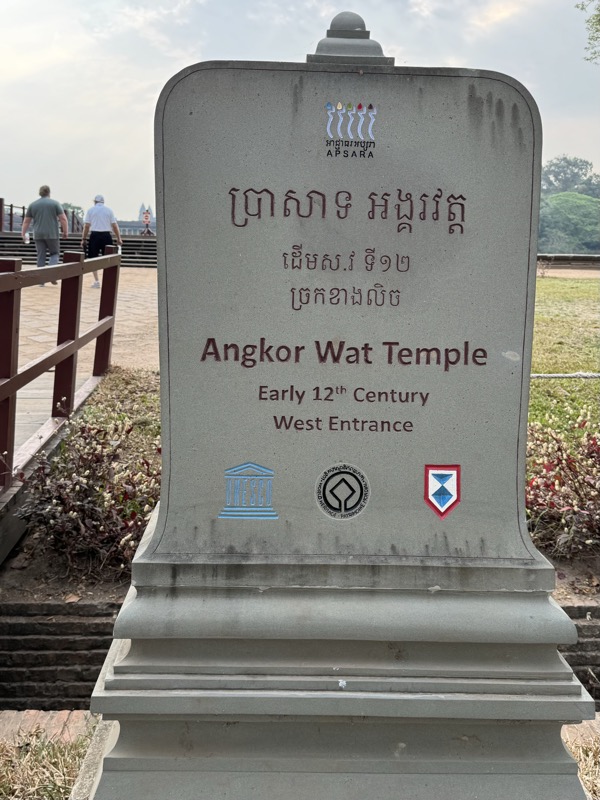
The weather was thankfully overcast and barely 29C (but ‘feels like 35C’, already) which made for some lovely moodily lighting conditions – mind you I couldn’t help but think there’s no way I would want to live in a place that has heat haze at 07:00 every day and it’s not even full summer!
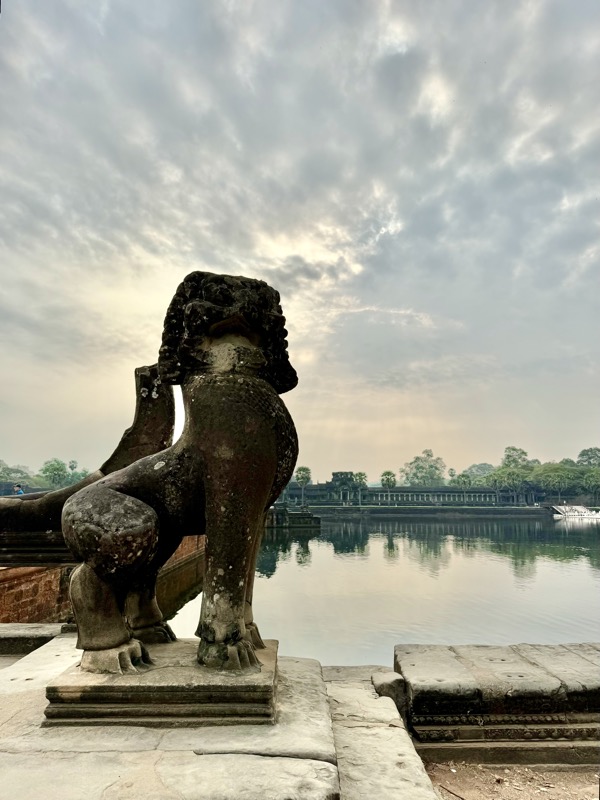
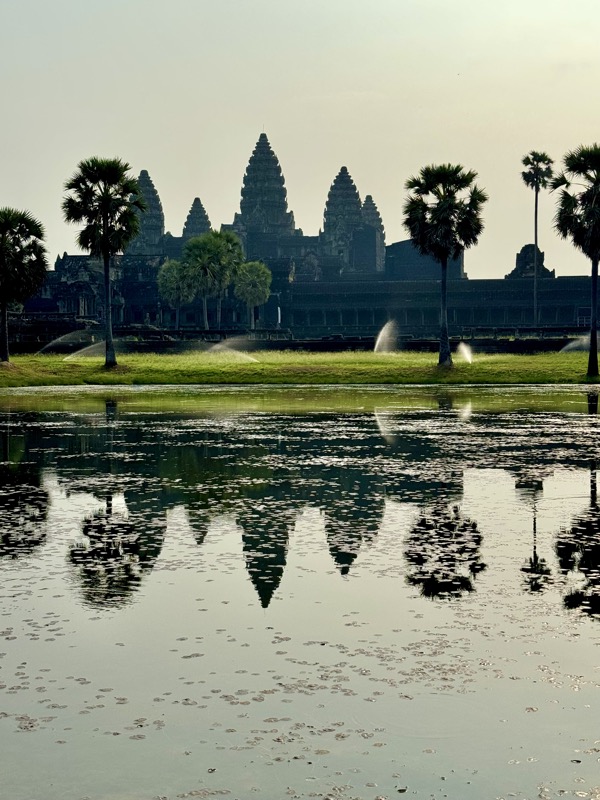
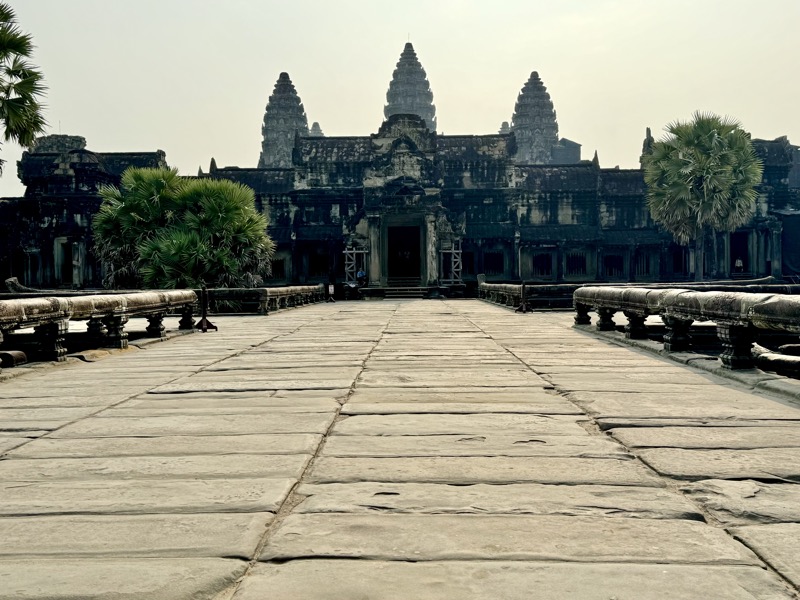
The Angkor Wat temple complex is a mixed Hindu and Buddhist temple that covers and enormous space in the ancient Khmer city of Angkor. It’s like 400 acres or something, so there was no way anyone can see it all in one day. It used to be at the centre of a busy and populous city, and was originally constructed as a Hindu temple dedicated to the god, Vishnu. A King named Survavarman II started the construction on Angkor Wat in the 12thC and it is understood to have taken 37 years to complete. Much of what is known about the early life of the temples comes from information etched into stone dedication plaques. Towards the end of the 12thC it was gradually transformed into a Buddhist temple, and there are many places where the motifs of the two philosophies exist side by side.
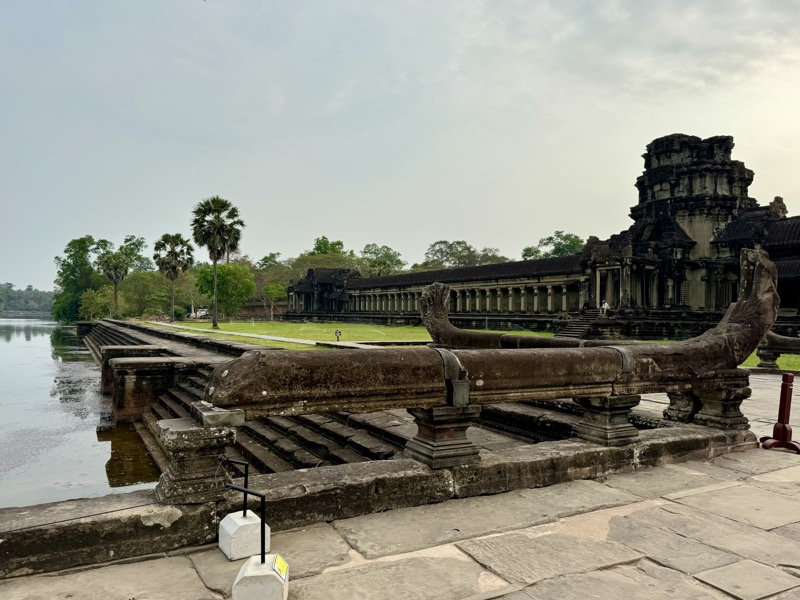
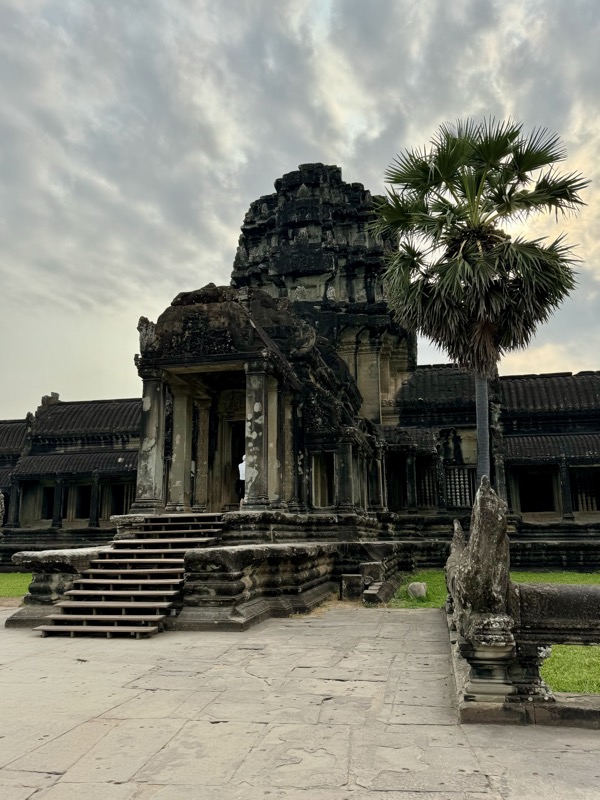
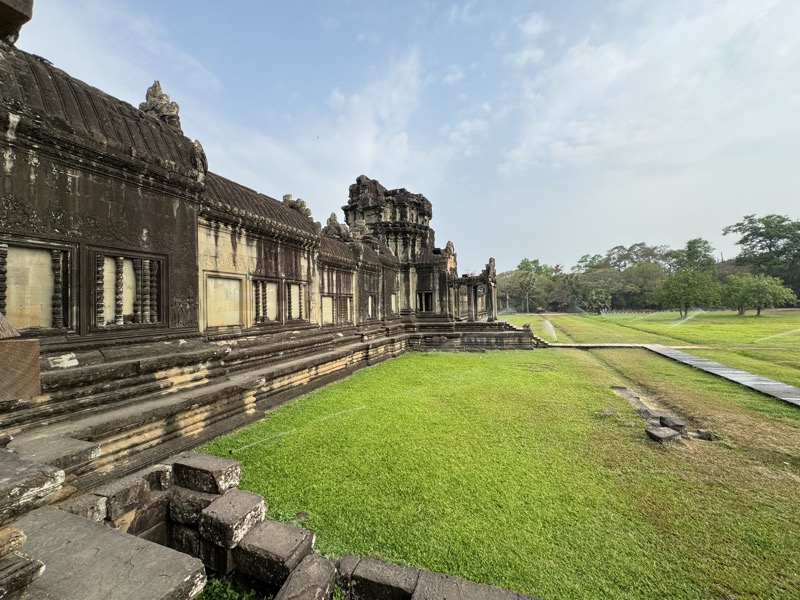
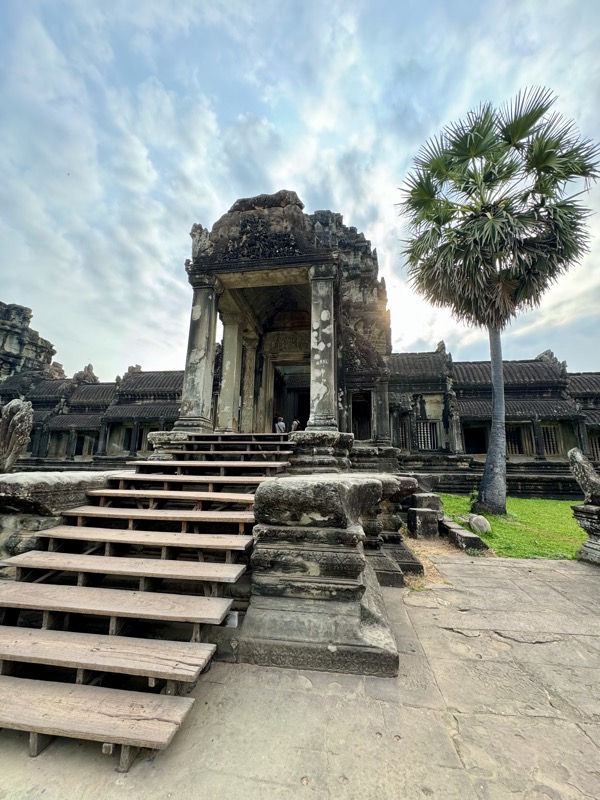
While never totally abandoned, the temples of Angkor Wat were left neglected by the end of the 15thC as people left the city that surrounded and supported the temples. Suggestions are that this exodus was caused by extreme and lengthy drought conditions or unrest between the Khmer and their constantly warring neighbours, the Siamese. Archeological finds have never uncovered the usual domestic items that are ordinarily found in a populous city area, so it seems more probable that people left in an orderly fashion. These exquisite ruins were largely unknown to western explorers until well into the late 19thC, when they became of interest to French missionaries, naturalists and explorers and this directly led to the French forming a protectorate over Khmer. To gain control over the land and this important archeological site, the French invaded Siam (Thailand) and then remained in control of Cambodia from about 1863 for the next 100 years. Having said that, no one here seems to identify much with the French language or culture anymore, so that particular colonisation effort doesn’t seem to have taken much root.
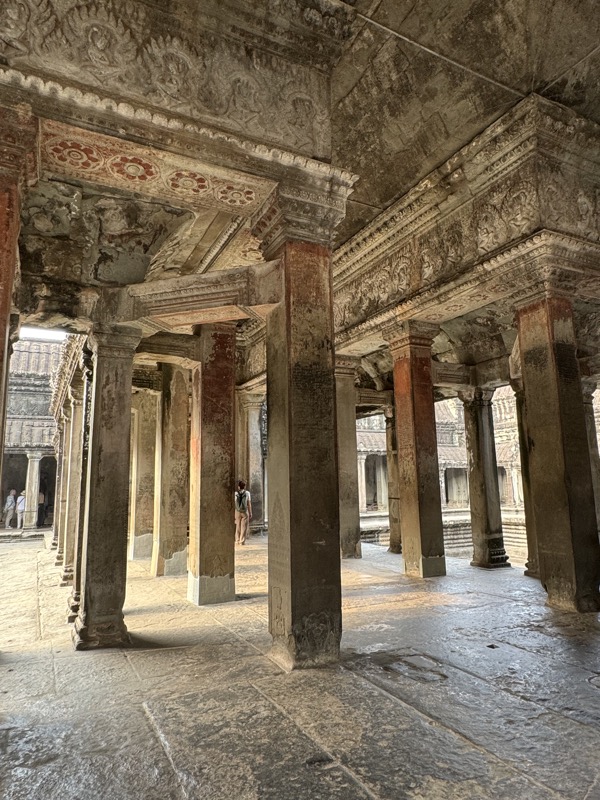
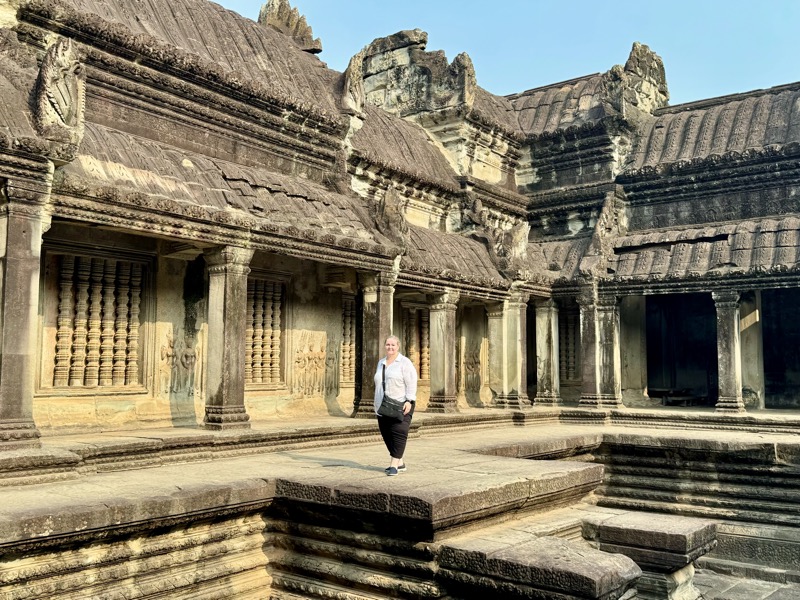
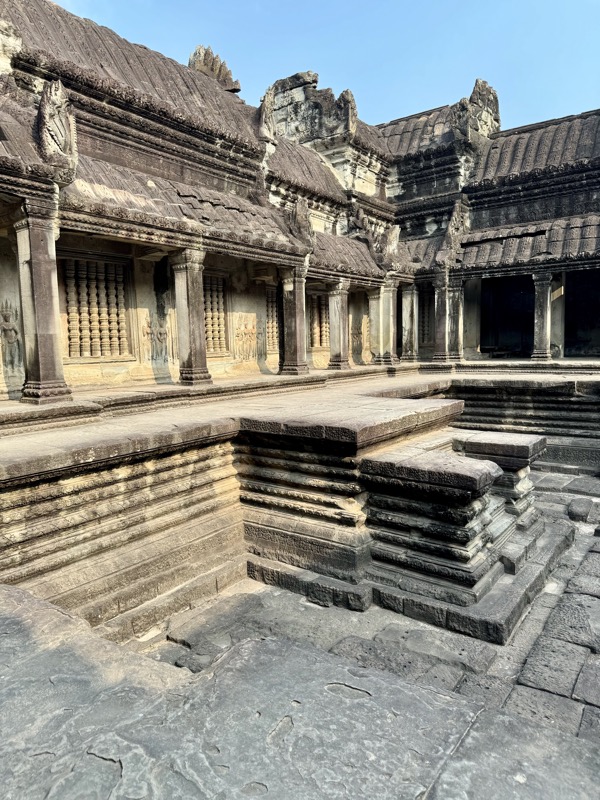
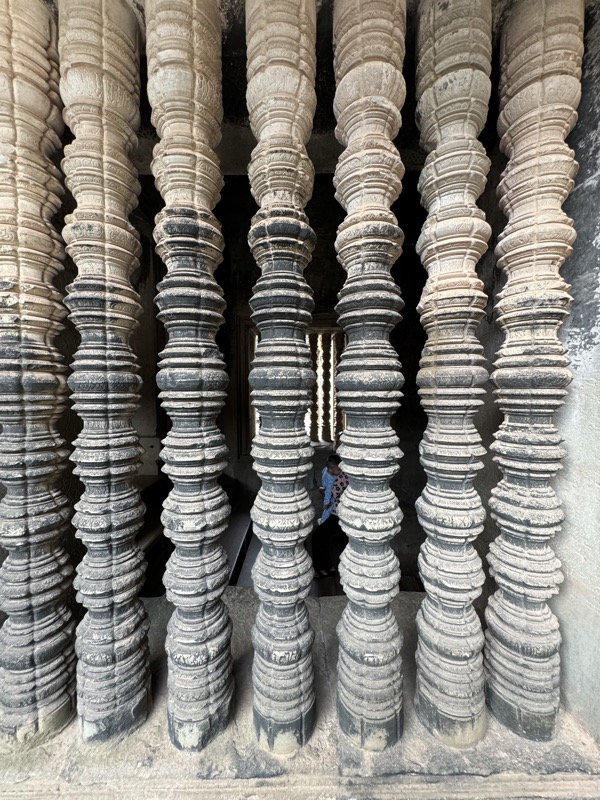
These colonnades that cover provide privacy screens over many of the temple’s window areas look like they’ve been done on a lathe they are so uniform and perfect. However Long tells me they were more likely all hand carved without the use of an any type of spinning rig.
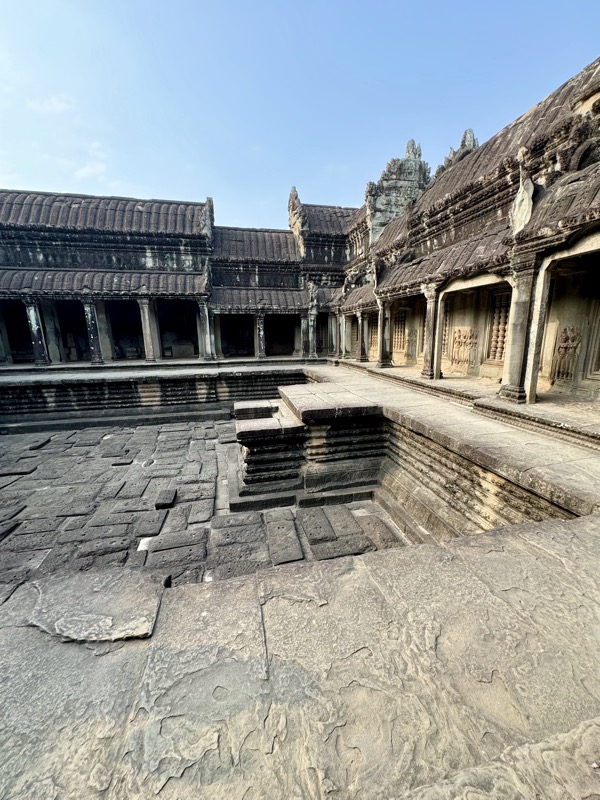

Throughout the complex are multiple representations of devatas, which Long described as nymphs… I swear we had a two minute conversation before I understood the word he was trying to pronounce was, ‘nymph’ as his accent is thick and he sometimes has a tendency to put emphasis on the wrong syllable making ‘nymph’ sound more like ‘ninephf’. There are depictions of ‘vanadevatas’, which are forest spirits or nature spirits, ‘gramadevata’ which are village or domestic spirits and gods, as well as devatas of river crossings, caves, mountains etc… I had him write these ones down to avoid confusion! Carvings of the devatas are scattered along walls throughout the inner buildings of the complex an each carving is very intricate with the devata adorned with individual jewellery, clothing, and facial features making each of them unique.
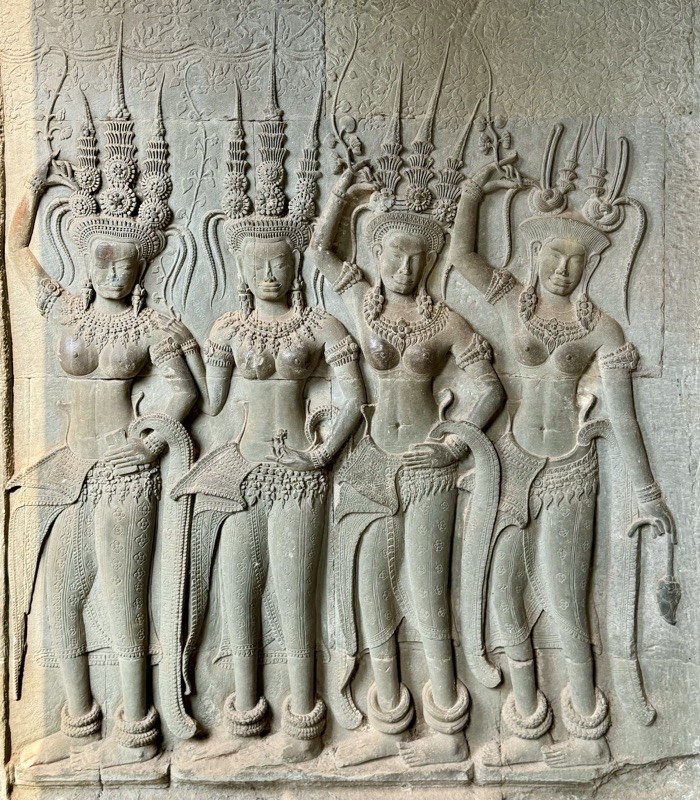
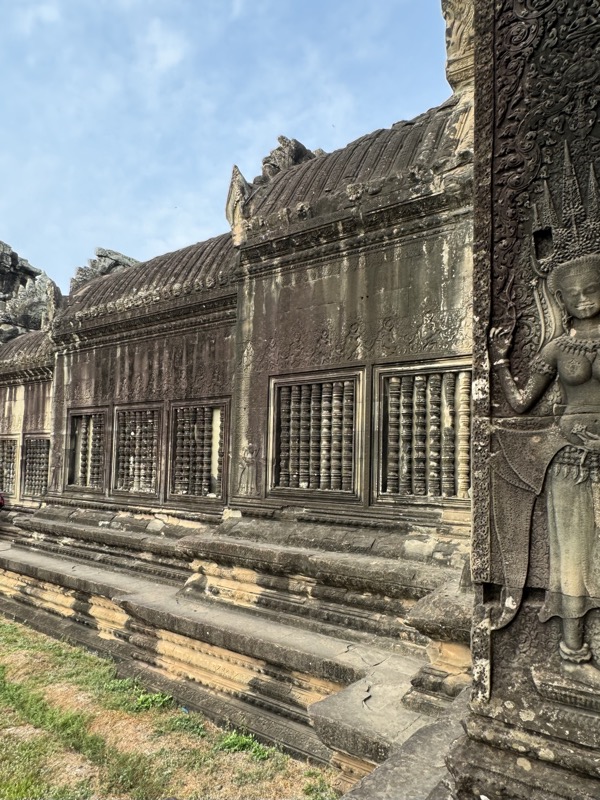
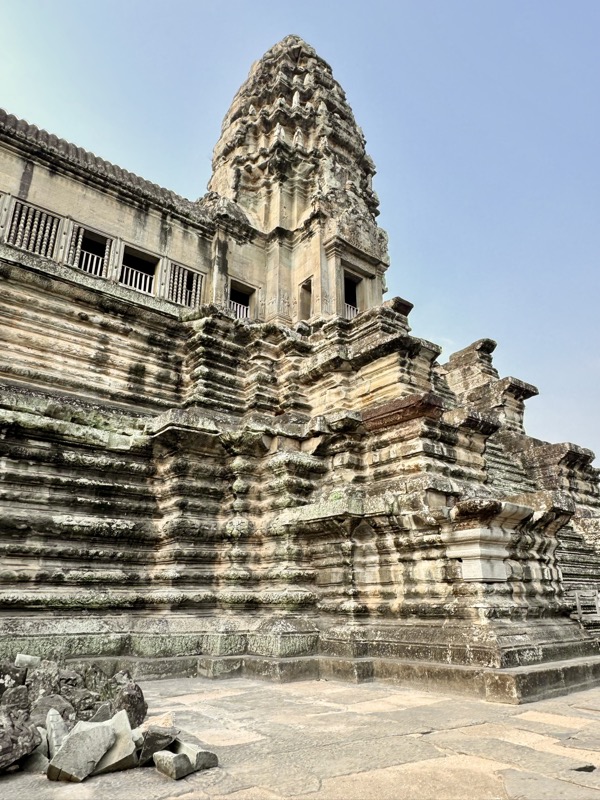
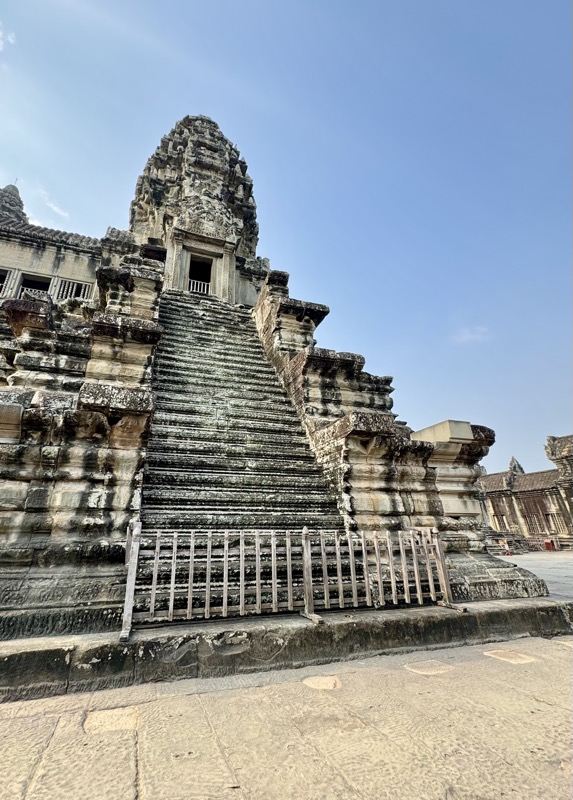
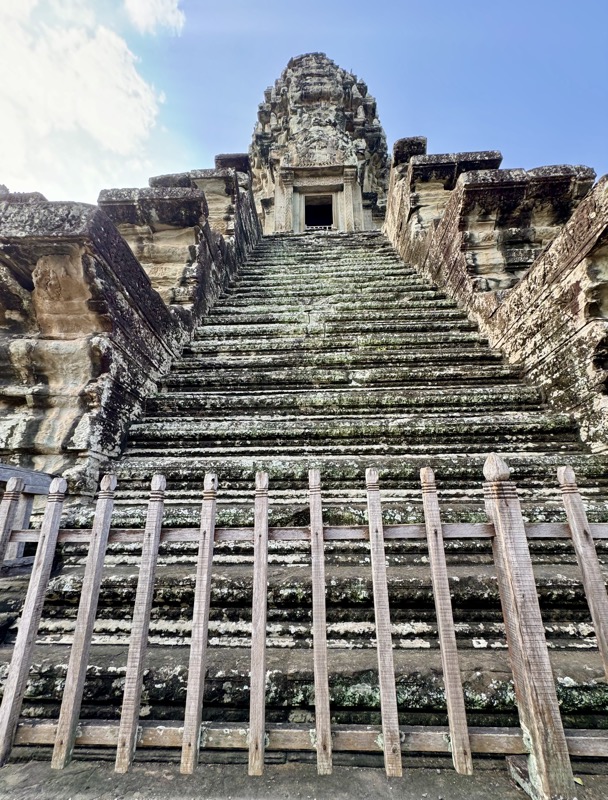
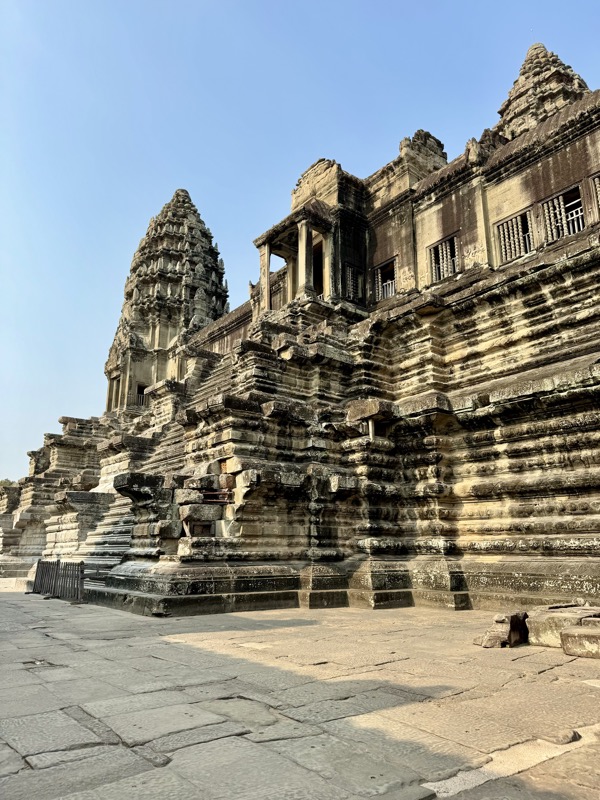
The early 20thC is when the ruins started to see some restoration and reclamation from the trees and jungle that had started to encroach on these ancient and magnificent buildings. In the modern imagination, the romance of the old temples fighting to stay upright among enormous tree roots is part of what draws people to visit, so Long was saying the restoration committees were constantly balancing the desire to maintain the structural integrity of the buildings, with the unusual aesthetic of the buildings having been encroached upon by the jungle.
Cambodia gained independence from France in 1953 and has had proper control over the Angkor Wat temple complex since then. In 1992, UNESCO named it a World Heritage site. Restoration work has continued on the site since French and German archeologists took an interest in the late 1800s. The work was disrupted though during the Cambodian Civil War and when the Khmer Rouge had a stranglehold on the country in the 70s and 80s.
Apparently these two war theatres didn’t actually cause that much damage – the invading armies stripped the temples for timber and there are some bullet holes evident in the stonework and bas reliefs here and there, but the bulk of the vandalism and damage evident in the complex is the result of Thai art thieves during the ‘80s and ‘90s – they stole nearly every head off every statue and much of it is presumed lost or sold into private collections.
Along either side of the main temple walls are 94m long bas relief friezes. They have the most inordinately intricate carvings depicting various Hindu gods battling diverse demons. Long was able to name many of these gods and demons and tell me stories of several of their encounters that were depicted, however it was an awful lot to take in and probably requires significant reading to jog my memory on which stories he was referring to. As a piece of art, it is absolutely stunning and I doubt I’ve ever seen a more significant or labor intensive piece in all of western culture.
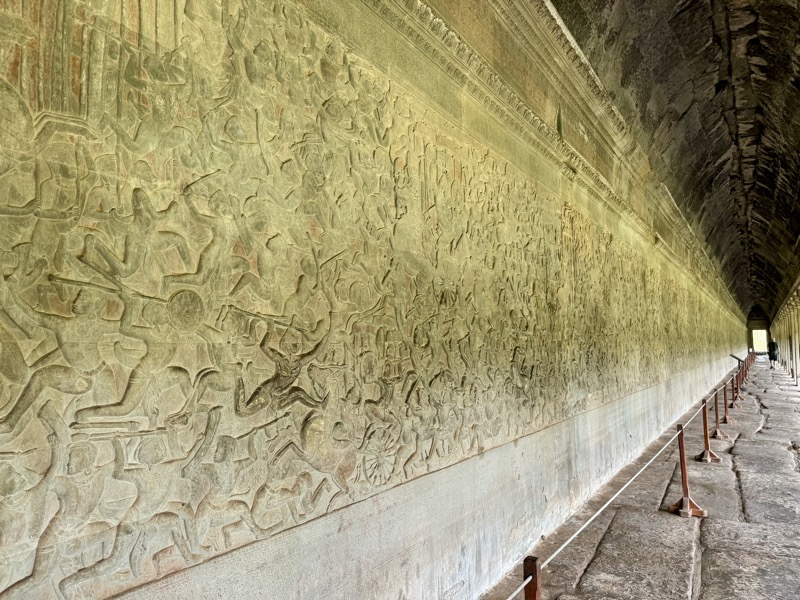
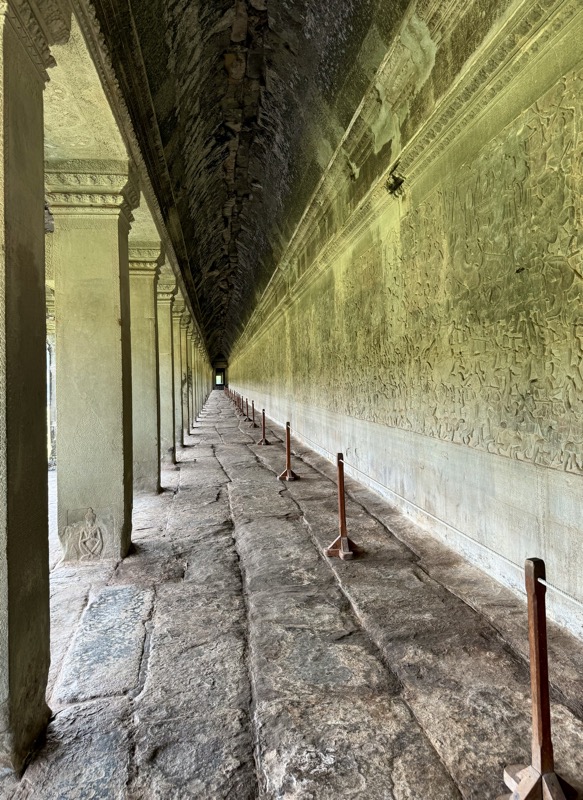
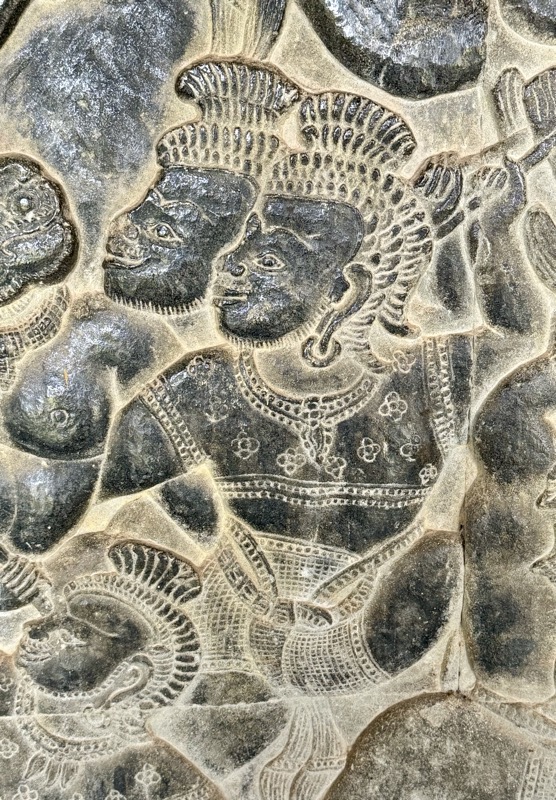
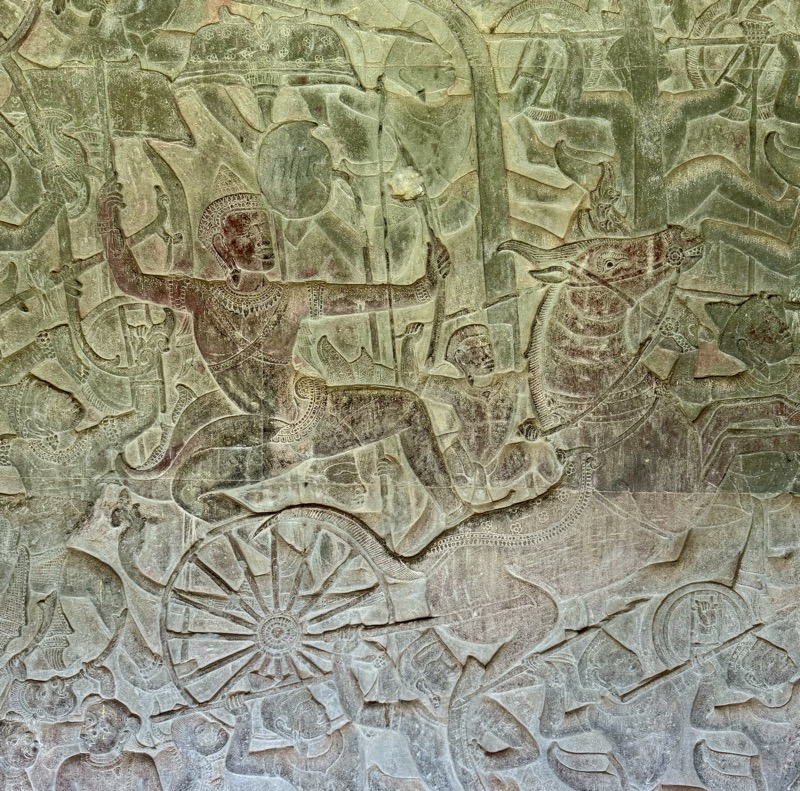
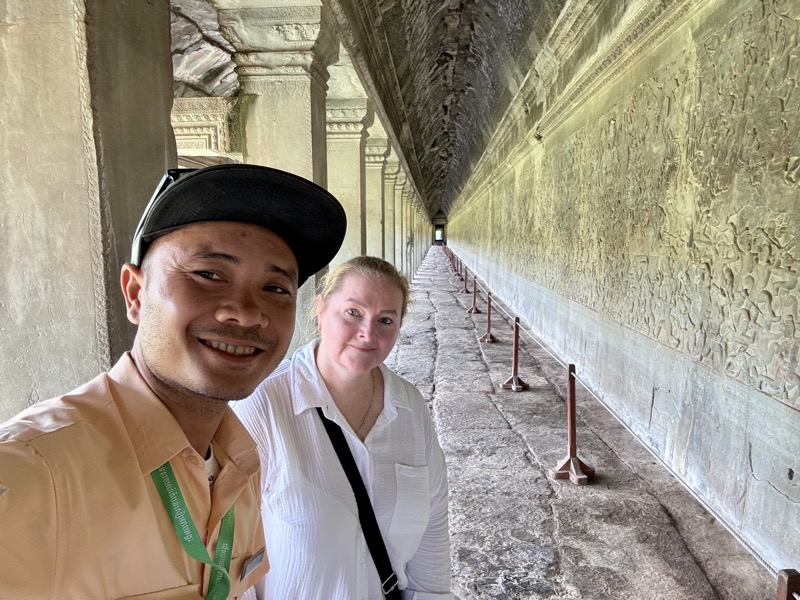
It was so hot, even in the shade, but we must have spent 20 minutes walking along this frieze with Long keeping up a fascinating commentary with stories of the gods riding their chariots, dragons and peacocks as they went to fight the in-fant-orry of the monkey demons.
The second area we visited was the Tonle Om Gate which is one of the major entrances to get to the Bayon Temple. It is lined on the right with demons and on the left with gods. The demons with their twisted gnarly mean faces make quite the contrast with the smiling, serene and calm visages of the gods.
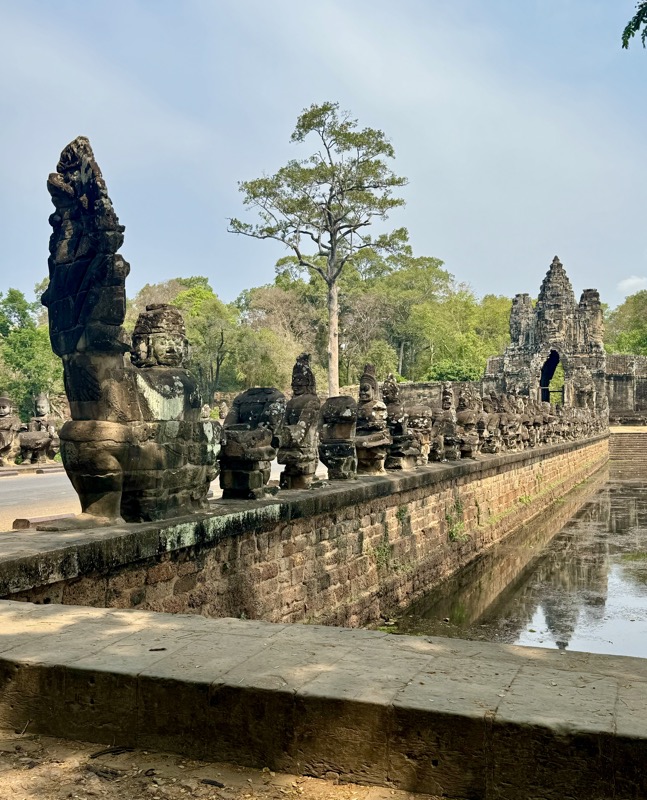
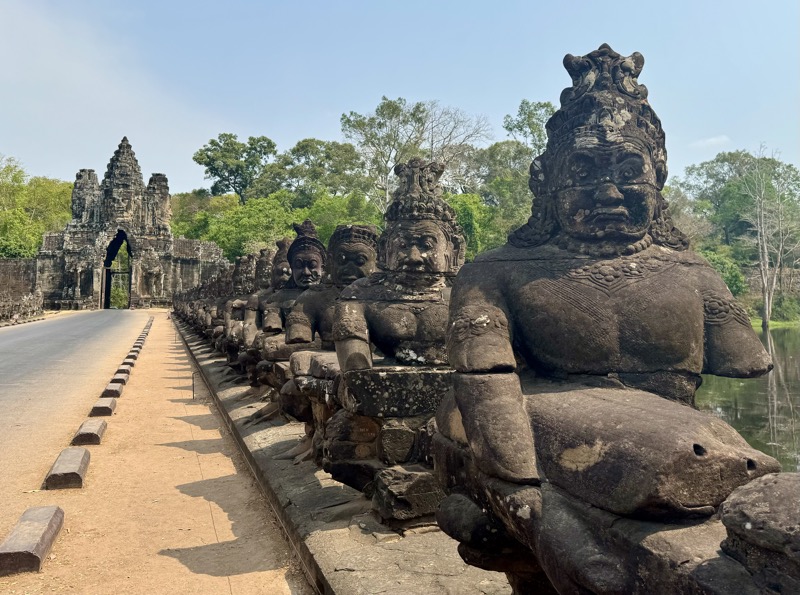
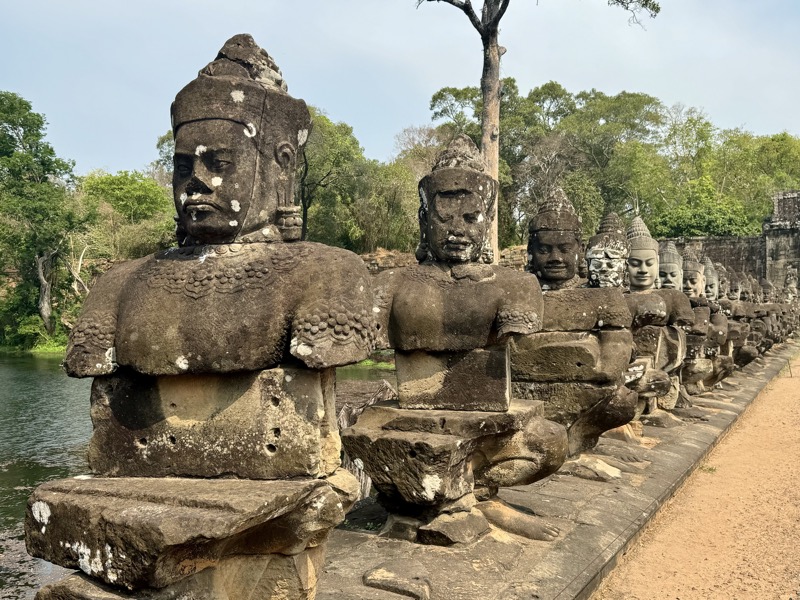
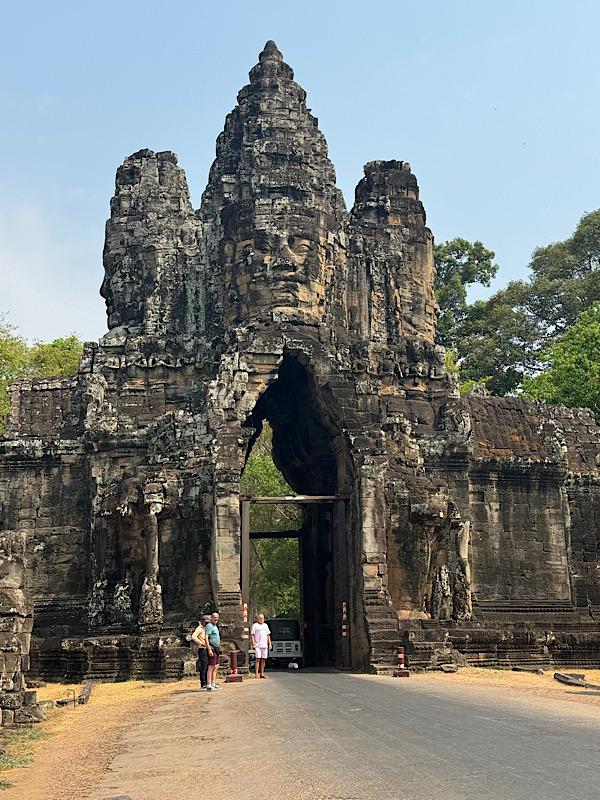
From here we went to Bayon Temple. This temple was built in the 13thC by Jayavarman VII, so it is a younger construction than the main temples of Angkor Wat, however it was built in only six years and the workmanship appears to have been less sturdy than the major Temples of Angkor Thom. This temple is believed to have been built to honour the memory of the King’s mother, his wife and his son.
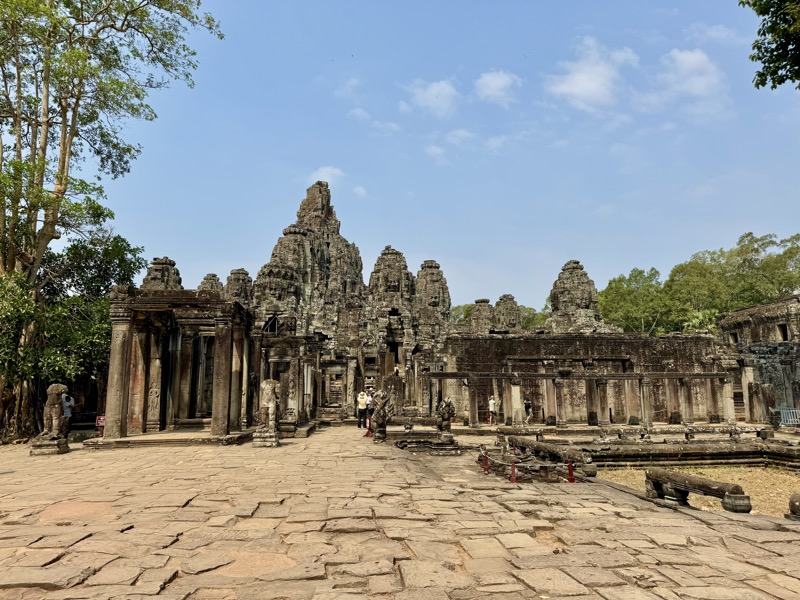
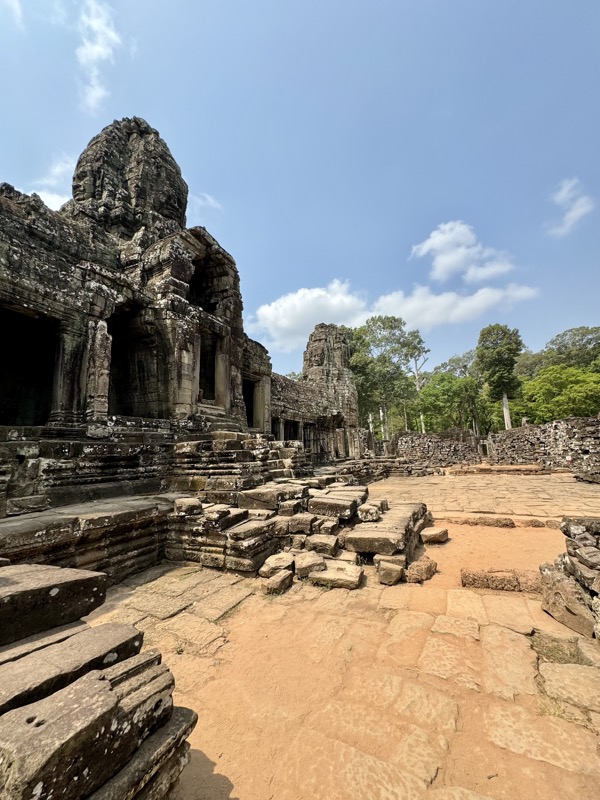
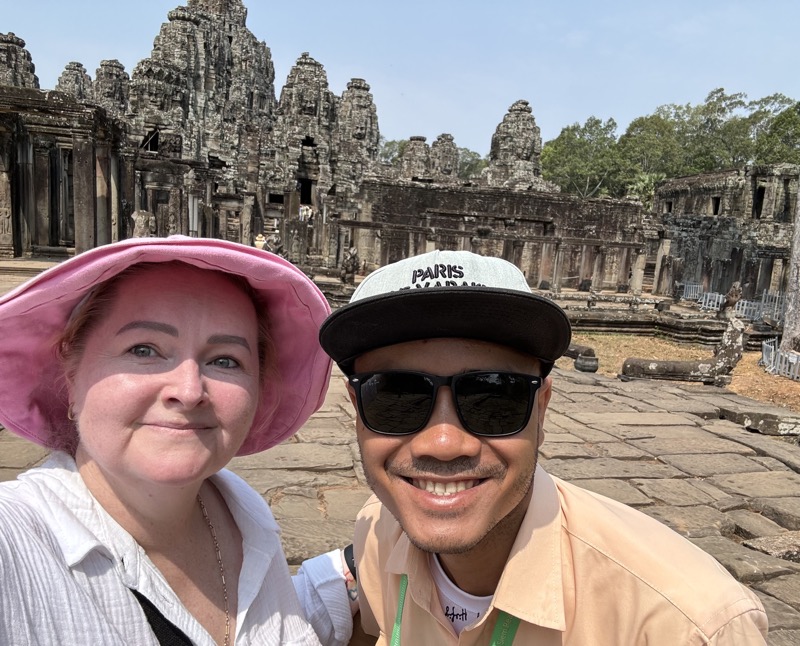
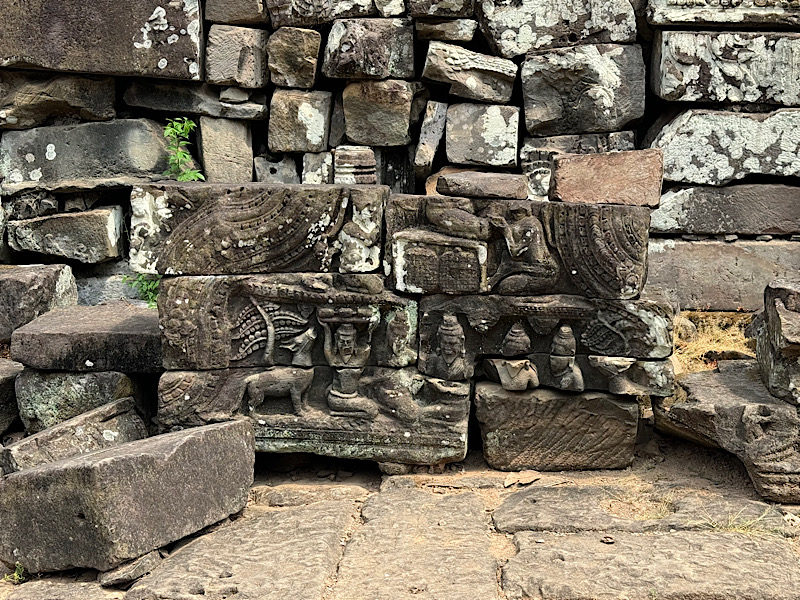
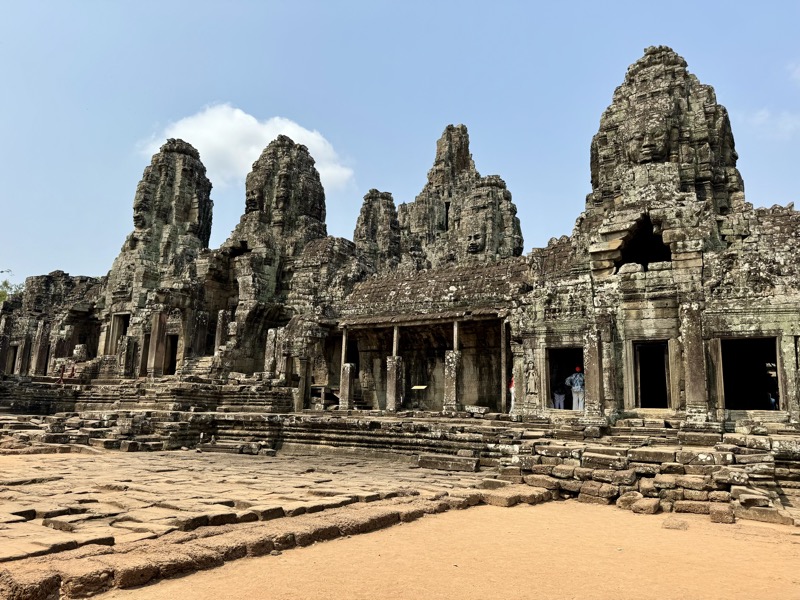
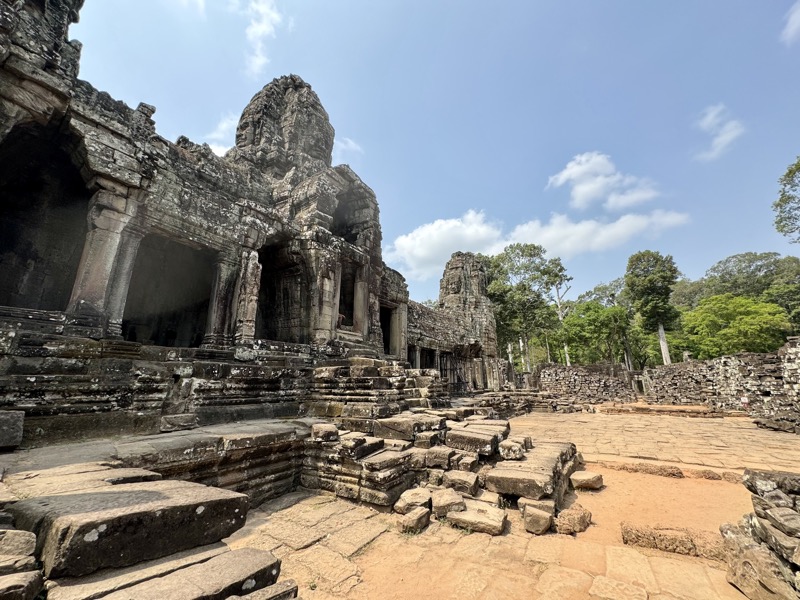
There is much more stone laying around in this temple – archeologists having been unable to restore constructions to their original situations due to the more severe deterioration. It’s like a massive jigsaw puzzle that will probably never be finished. All these temples were constructed without any mortar or cement type processes, which makes them especially impressive. Great piles of stone have been gathered and stacked up in a mish mash of walls and middens they make no sense and will unlikely ever be able to be replaced in their original spaces but they make gorgeous textural installations in their own right.
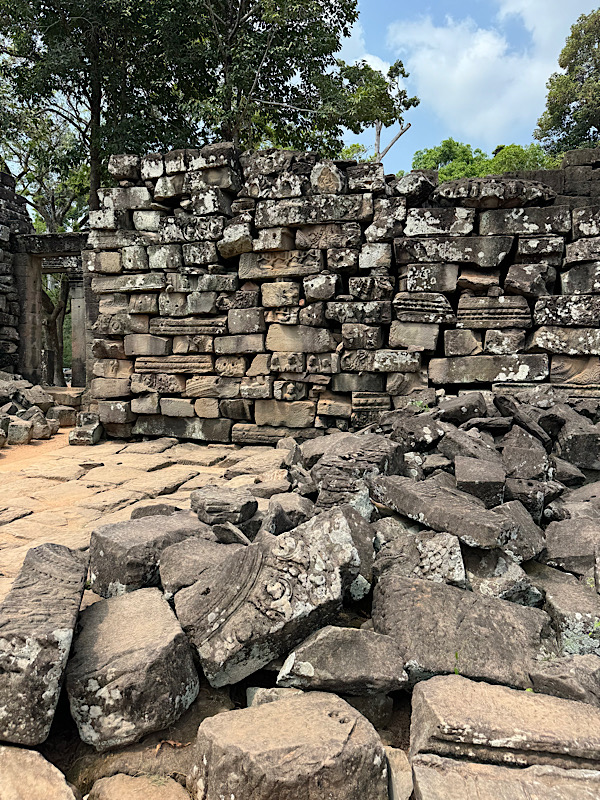
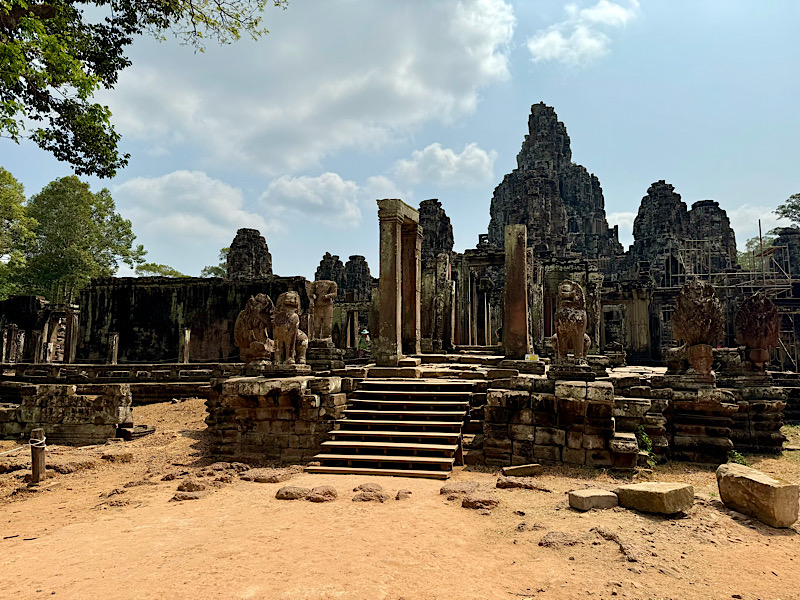
After this we made our way around to the most famous part of the Angkor City temple complex – Ta Prohm. This is Angkor Wat as it sits in popular imagination thanks to films and documentaries. Long was repeatedly telling me that ‘this spot’ or ‘that spot’ was where something was filmed in the movie “Tomb Raider” – but I have never seen it, so it was neither here nor there to me. He also informed me that the studios paid USD$10,000 to flood the site for the filming so that the large moat areas would look like they did when they were originally built. A paltry sum for Hollywood to use a UNESCO World Heritage Listed area as a playground, in my opinion.
This place is absolutely spectacular – it is now so inexorably intertwined with the jungle that they couldn’t possibly attempt to remove the trees that are providing support for the temple in many parts. The preservationists are having to work with the trees that are hundreds of years old to maintain stability in the structures, and there are many areas that are roped off as unsafe for visitors.
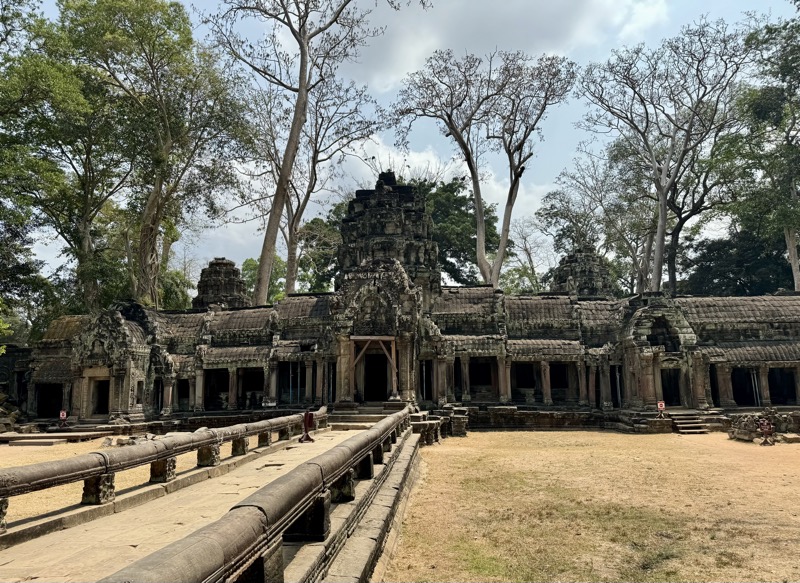
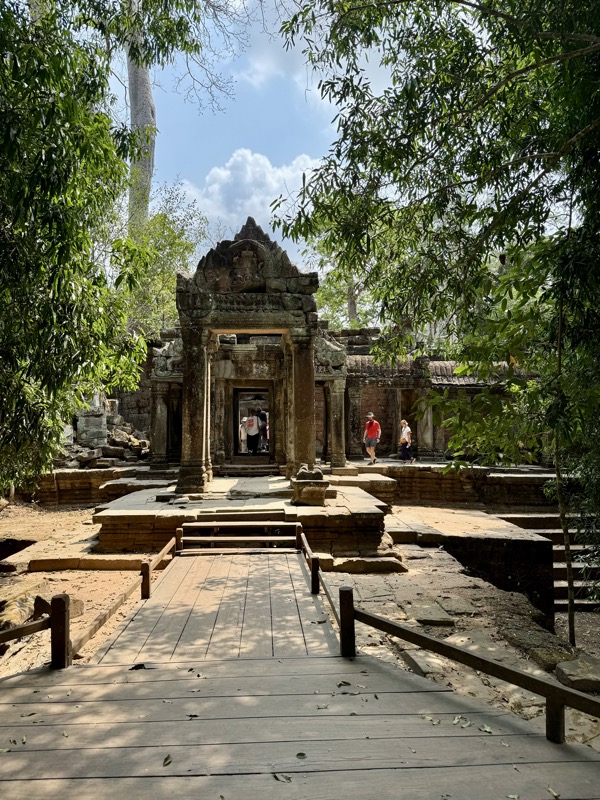
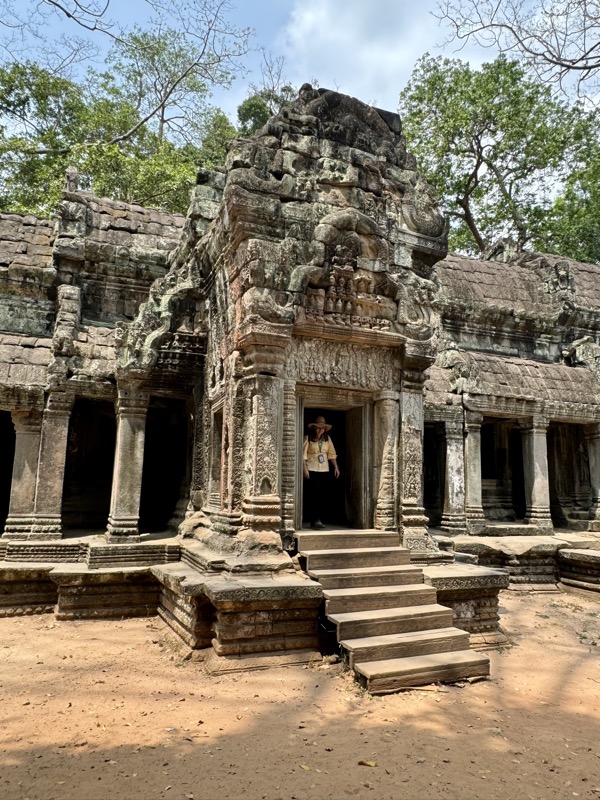

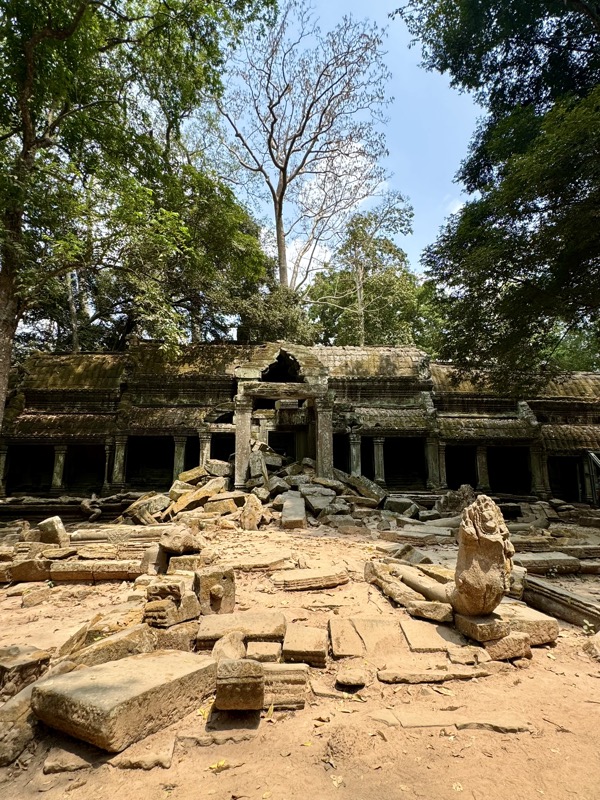
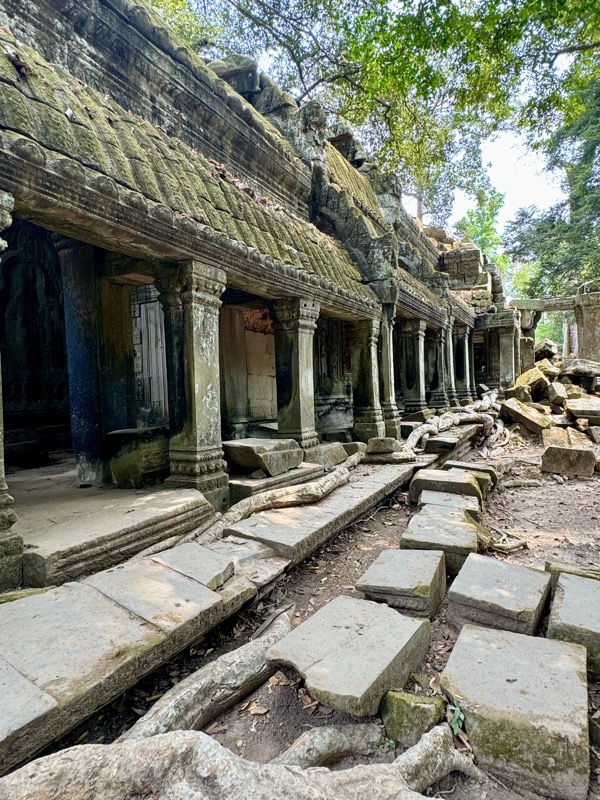
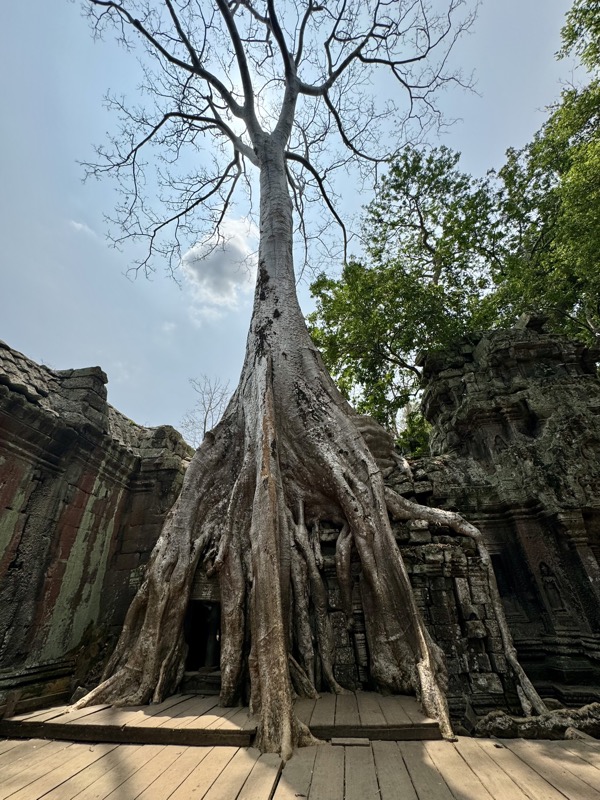
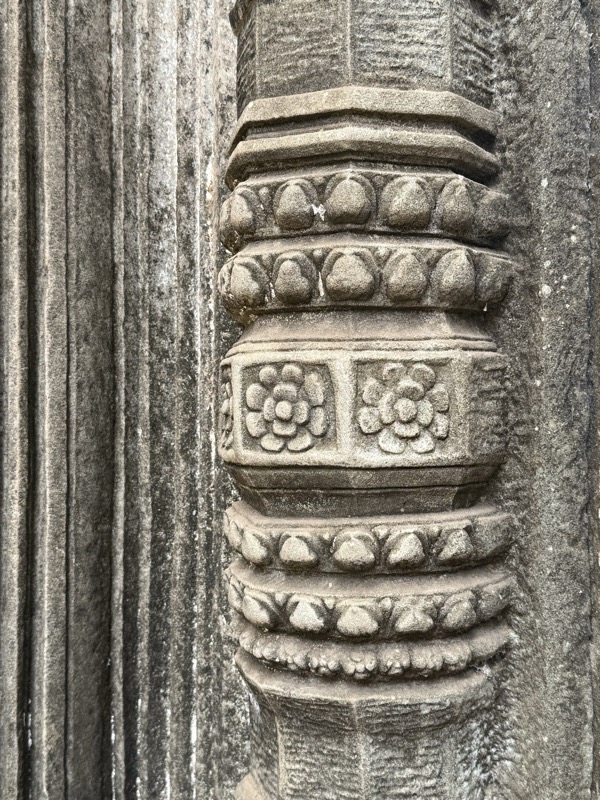
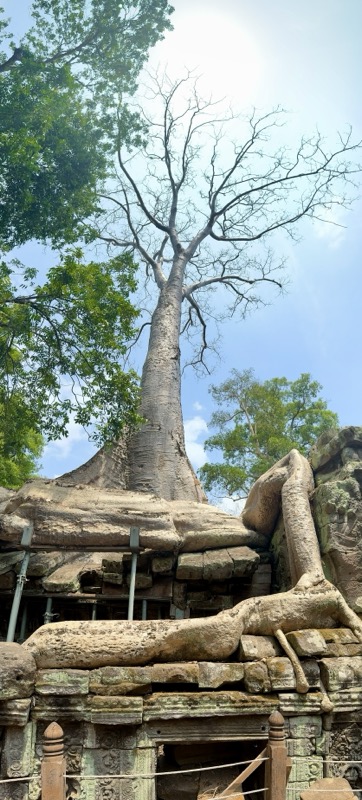
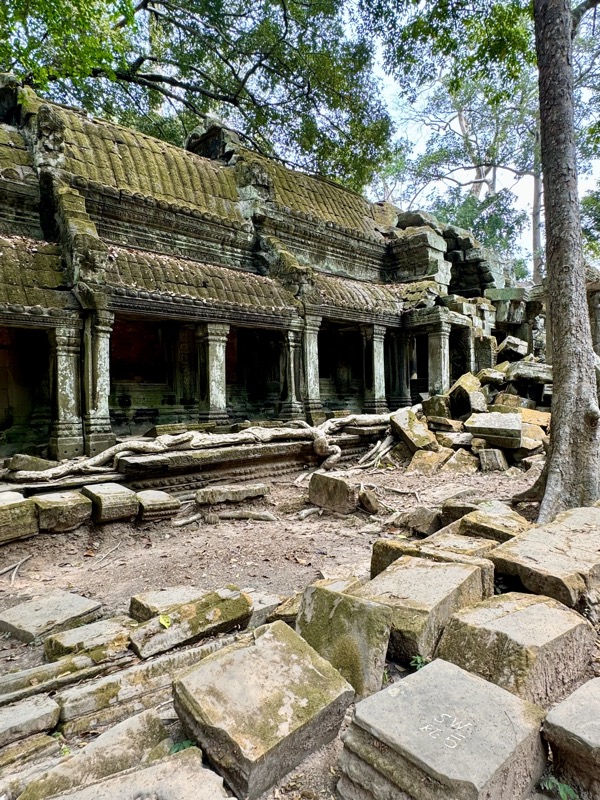
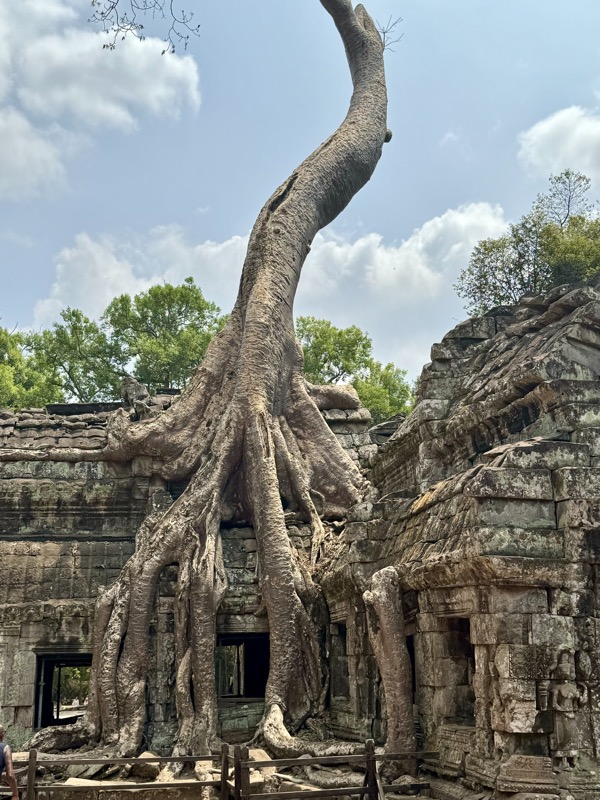
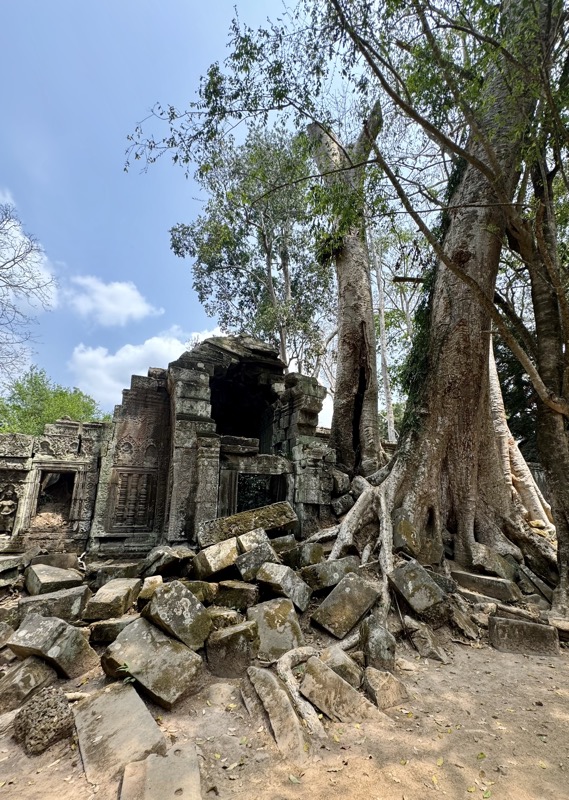

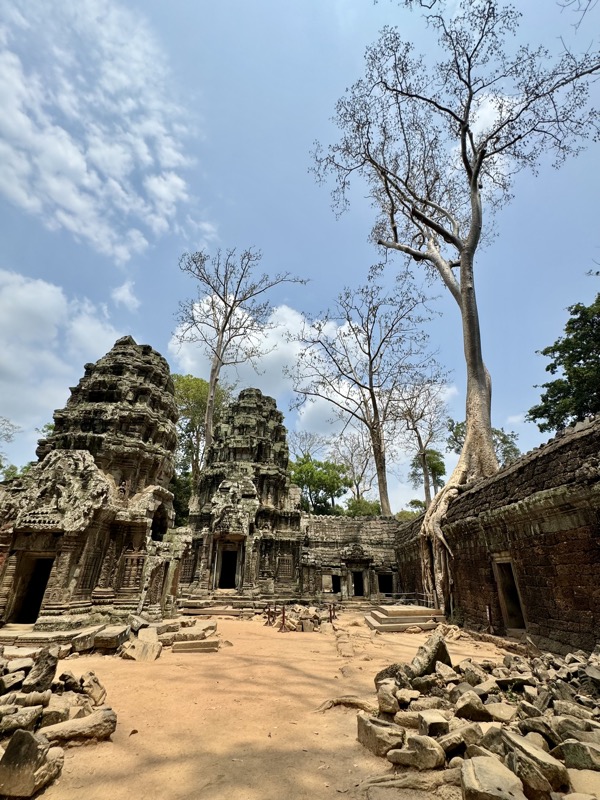
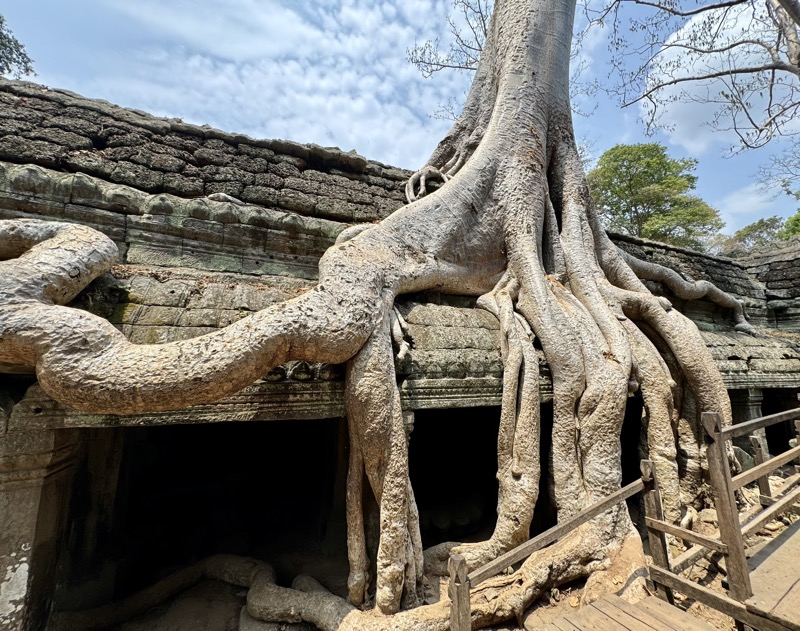
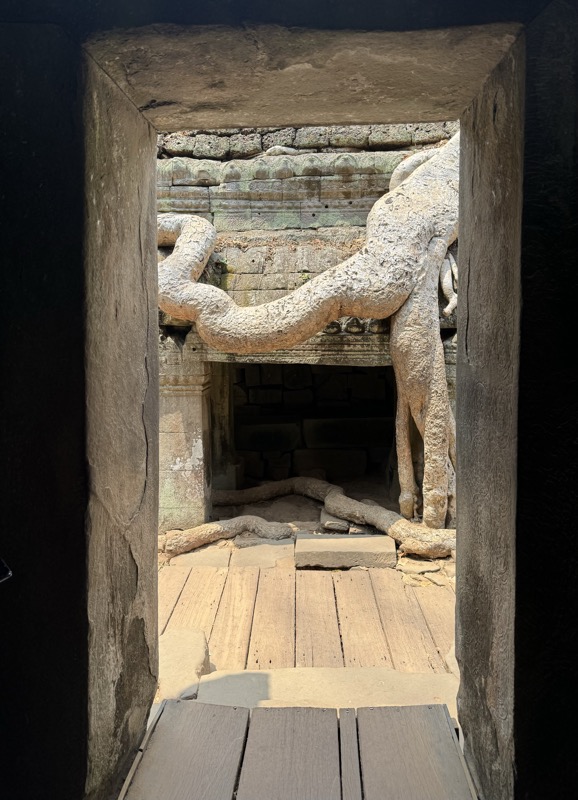


I took so many photographs that I totally lost track of what I had and hadn’t captured. There was just so much to see – and it’s a strange sort of paradise. Thankfully the place was also rather quiet compared to some major tourist sites and I managed to get quite a few photos without too many people in them. This is absolutely the Angkor Wat of National Geographic magazines and tourist brochures and was just as spectacular as I had anticipated!
On the way back out to the van, there was a group of musicians set up playing for charity – on closer inspection, it turns out they are a band of landmine victims raising money and awareness for families and others impacted by land mines. Cambodia still has a major problem with land mines, particularly in the rural and border areas. This is the unhappy legacy of over three decades of war in the late 20thC… there are over 40,000 amputees in Cambodia, and over 1000 mines are still being found every year, which is one of the highest rates in the world.
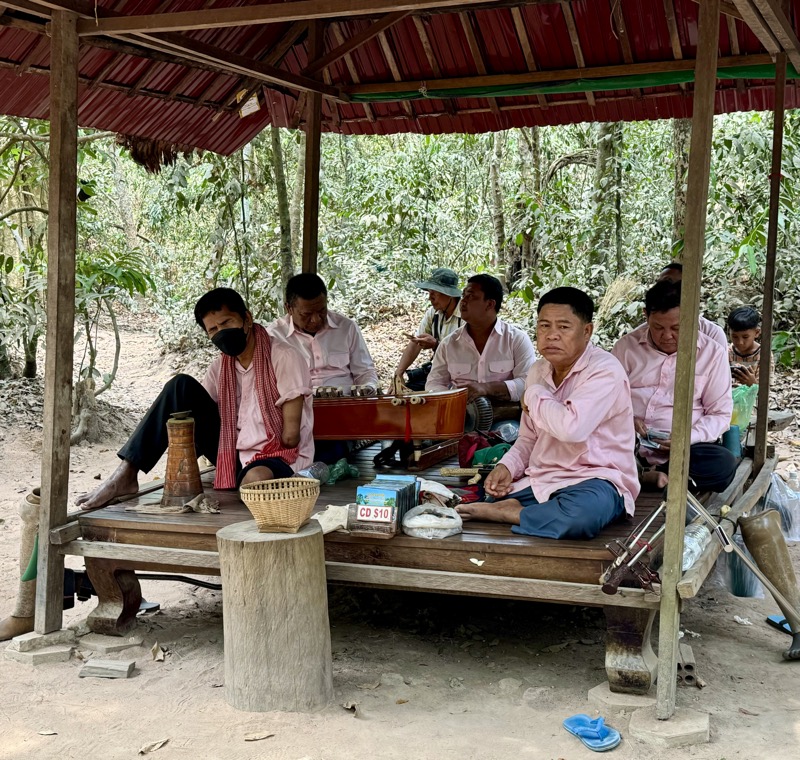
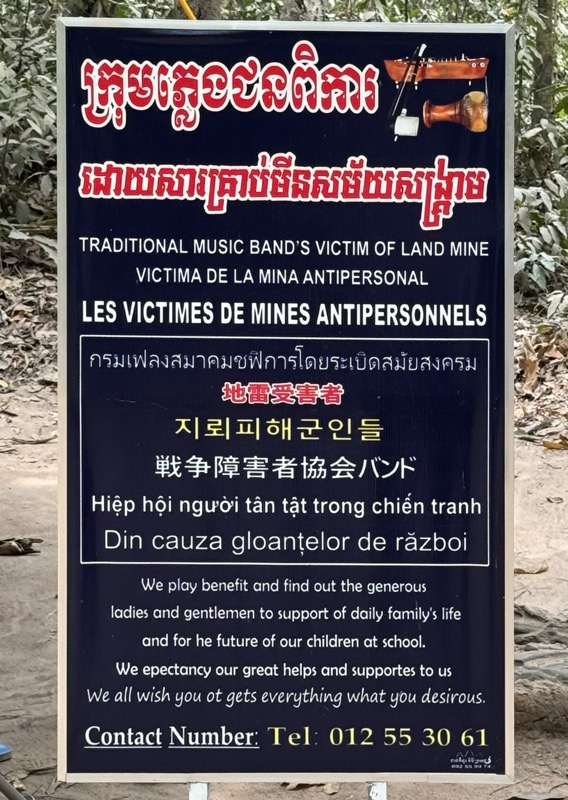
After visiting Ta Prohm, it was time to head back to town to grab a bite for lunch, and then start my transit back to Bangkok. It was at this point, when I joined Mr Rolex in the minivan, that I could feel my knee absolutely throbbing from the bashing I had just put it through with all these steps and on so much uneven terrain. Long managed to get me some ice to put on my knee for the drive – which amusingly was just one huge chunk, but it helped!

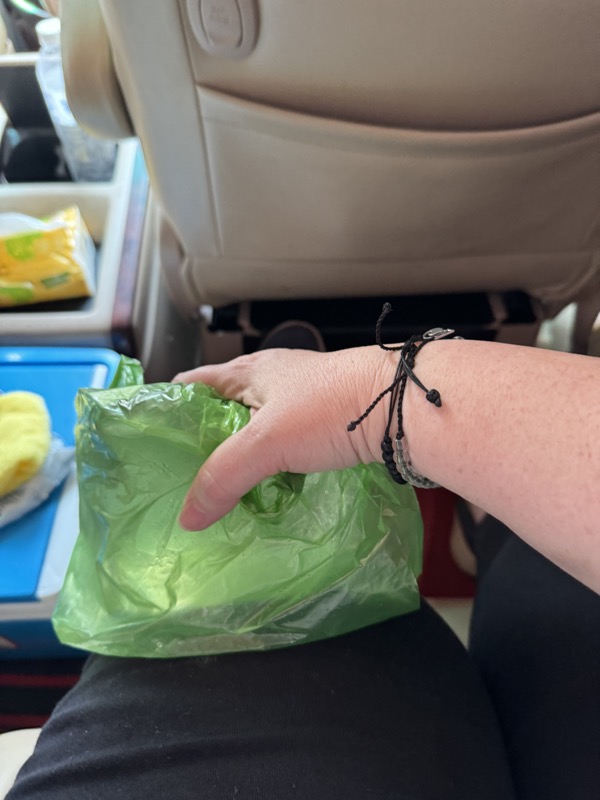
So it was time to say ‘goodbye’ to Long, and hit the road with Mr Rolex and go hurtling back towards the border. I had taken some extra cash out of the ATM at the hotel to give to Long – without his excellent English and steady efforts to make sure I understood him, I doubt I would have learned as much on this little side trip, as I have. I may have given him the largest tip I have ever given to a guide (or anyone for that matter), and handed him an envelope with USD$200 in it – which will make very little difference to me, but possibly make a huge difference to him and his family. I Googled later and discovered that the average tour guide in Cambodia before Covid was earning around USD$300-400 a month, so I gave him a couple of week’s pay and suggested he spend it on English lessons for his sons – he had told me at the floating village that he was determined his boys would be fluent in English, as it was the key to a better paid life in any field in Cambodia.
Mr Rolex and I had our drive back to the border in a more easy silence this time – it was quite unnerving yesterday being driven into the unknown with someone whom I was unable to communicate effectively with! But today it feel far more comfortable, and Mr Rolex picked me up a refreshing ice cream when he stopped for fuel… normally I’d avoid this much sugar, but after this full on day hiking the temples in the heat (it got up to 43C!), I totally felt that I had earned it!
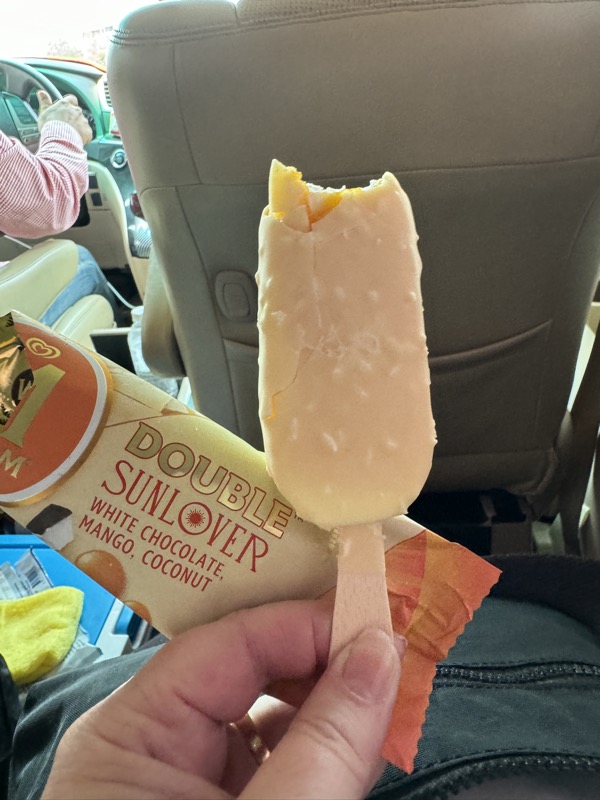
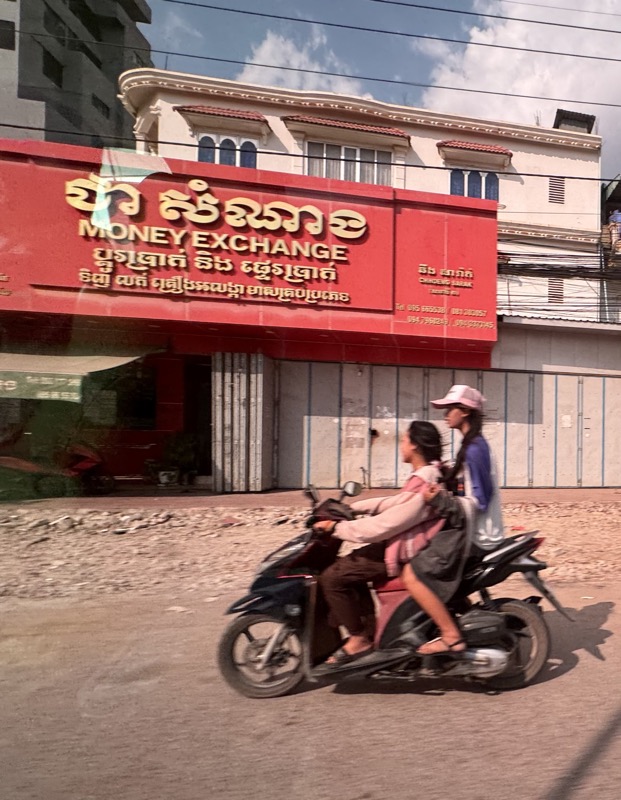
Part way through this drive, Mr Rolex made a stop so we could use the toilets… and I was like, good plan – I’ve been hydrating like a MOFO all day. At least I thought it was a good idea until I saw this:
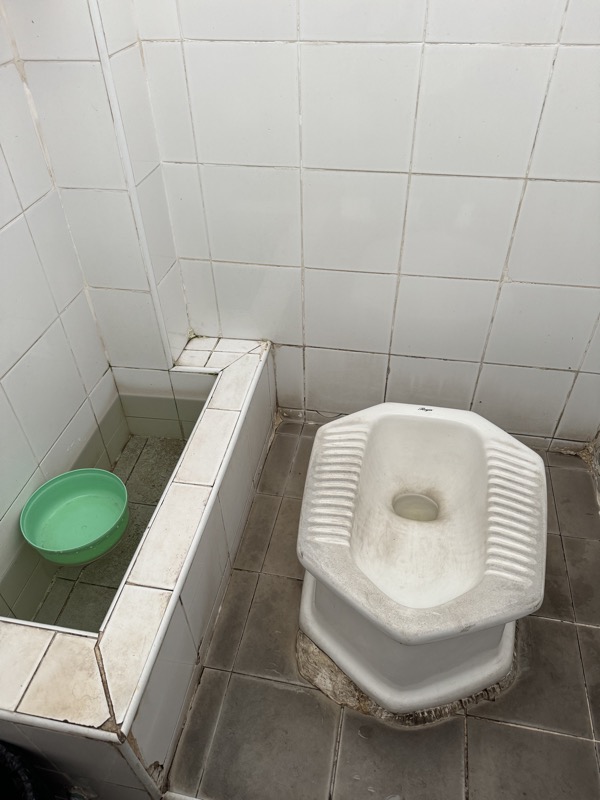
Oh noes! I’ve never had trouble with squat toilets before, but I’ve never tried to use once since I tore the meniscus in my knees and was subsequently diagnosed with ‘sever osteoarthritis’ which runs in the family apparently. Le sigh… and then of course I have totally and utterly over done it today. Ended up having to do the world’s weakest hover pee. lol… but what do you do? 🙂
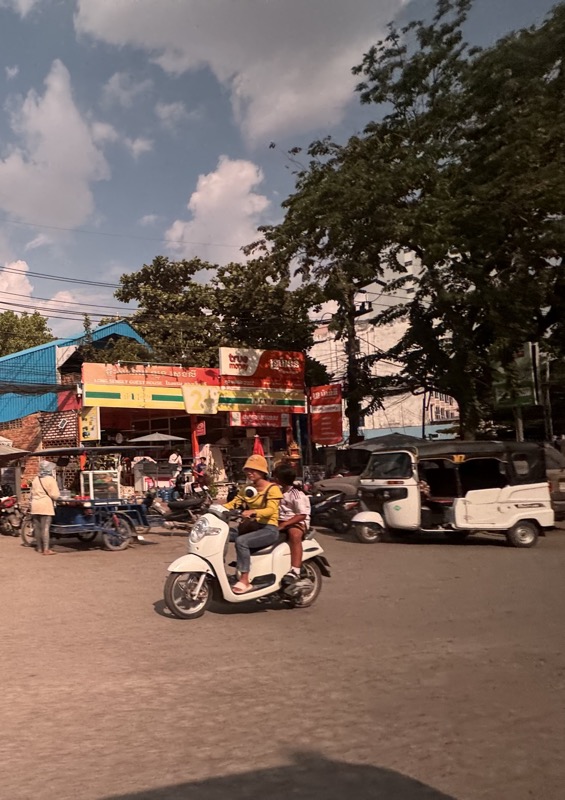
Then it was back to the border and back through the process of being handed from one stranger to another until I was collected by another driver to head back to Bangkok… and of course this driver spoke almost zero English also! My years of learning French and German were of zero use to me on this adventure, and even Google translate wasn’t of much use for some reason… and he was hopeless! Mr Rolex was a very safe and even handed driver – this guy, whose name I didn’t catch at all was all over the place! He was changing lanes constantly, braking late, talking on his phone, watching a video on another phone that was mounted on the dash, all the while making this weird sucking on his teeth noise, and he got totally lost once we got back to the city taking at least four wrong turns each of which added to our arrival time according to Google Maps in the back. Oh, and drinking beer while he drove… nice!

We did eventually get back to the Shangri La in once piece – oddly this guy didn’t get a tip from me. Hmmm. Wonder why? I’ve never been so relieved to walk into the hotel lobby to hear someone singing the Beatles’ “Hey Jude”, very off key with a thick Asian accent! What a crazy day!
